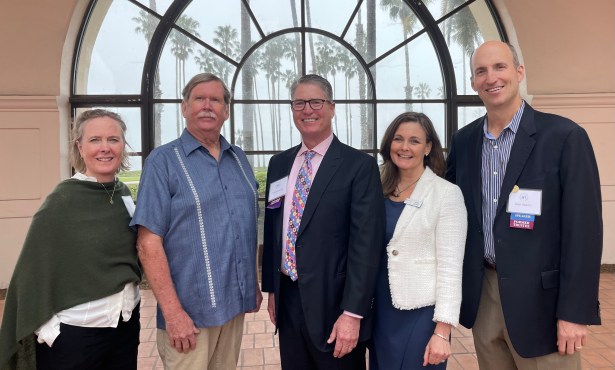Bach’s Universe in a Piano
Bach’s Goldberg Variations, performed by Hee-Kyung Juhn. At
UCSB’s Lotte Lehmann Concert Hall, Friday, October 27.
Reviewed by James Hanley Donelan
 When Hee-Kyung Juhn walked onto the
When Hee-Kyung Juhn walked onto the
Lotte Lehmann stage in a silver-gray evening gown, she seemed
almost too alone out there. A single performer, a single work, and
a Steinway — could this be enough for an entire concert? The answer
was a brilliant, thunderous “yes,” and an affirmation of the
potential that a single pianist can unleash with a work that Bach,
paradoxically, had written so that a harpsichordist could lull his
employer to sleep. The story — that Bach wrote these 30 variations
on a theme for Goldberg to help Count Kayserling’s insomnia — has
never been established with certainty, but the Goldberg Variations’
place in music history is utterly without doubt. They are the Mount
Everest of the theme and variation form, the most thorough and
challenging exploration of counterpoint ever written. Juhn’s
extraordinary performance on Friday brought out every clever idea,
every witty phrase, and every astonishing harmony into a coherent
vision of the awesome beauty of this work.
If the work itself is so miraculous, why play it on the piano
rather than the harpsichord? Bach died more than a century before
the invention of the iron-frame piano; its enormous dynamic range
and rich sonority would have astounded him. To play a harpsichord
work on a modern piano, as Juhn did, requires more than a sensitive
touch — it requires a deep and nuanced understanding of the way
Bach wove each contrapuntal line. Juhn gave us glittering runs on
the higher keys as her left hand led a trudging descent in the
bass.From there, she built cathedrals of sound as a simple melody,
bit by bit, formed itself into the dances, hymns, sonatas, trios,
and inventions that make up this enormous piece.
As the time (almost an hour and a half) flew by, the world of
Bach’s Goldberg Variations became more familiar, leading to a
“quodlibet” — a juxtaposition of several melodies — just before the
final restatement of the aria that began the whole work. Hearing it
again was like greeting an old friend after a long trip — the
intensity of the experience makes it all hard to explain. By then,
we as an audience felt at home in this world of rich sound, and we
were reluctant to return to our own. But we had been
transformed.



